Start Exploring Keyword Ideas
Use Serpstat to find the best keywords for your website
What Are Keyword Stuffing and Redundant Phrases?

Since the Panda algorithm update in 2011, Google has continually updated its algorithm to promote quality content over spam-like articles pumped out by content farms. Some of these include the spam update in October 2022 and the Helpful Content update in August 2022. All of these changes aim to reduce the rank of those pages that contain keyword-stuffed, low-value content.
What, then, is the best way forward? How do you avoid keyword stuffing while staying relevant? That’s precisely what we’ll be explaining in this article.
What Is Keyword Stuffing? Understanding Keyword Density
It’s that simple!
There are, of course, more complex ways to calculate the keyword density. Some of these methods break down the calculation to include the number of words in your keyword or phrase, the total number of keywords you’re using, and more.
If you want an accurate keyword density or as close to accurate as possible, you can use one of the free tools we recommend later in this article.
How Does Keyword Density Relate To Keyword Stuffing?
- A keyword or phrase more than once or twice per 100 words.
- Locations, addresses, and numbers as often as possible within the text.
- Irrelevant keywords or phrases so that the text reads unnaturally.
How Does Keyword Stuffing Affect SEO?
In the early years of Google and SEO, there’s no doubt that keyword stuffing was highly effective. However, due to changes to the Google search algorithm, it’s clear that this is no longer an effective strategy to boost a page’s rank.
According to Matt G. Southern, a Senior News Writer at SEO Journal, keyword stuffing definitely has a negative impact on your search engine optimization. However, he’s not the only SEO specialist who shares this opinion. Others include Neil Patel, renowned SEO expert and content creator, and Limor Barenholtz, Director of SEO at Similarweb.
Even Google makes it quite clear that keyword stuffing will poorly impact SEO, listing the practice under their spam policies.
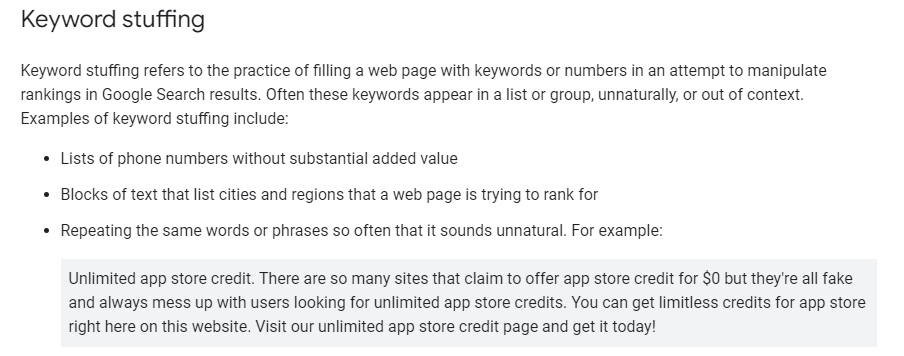
How Many Keywords Are Too Many?
That said, despite the negative effect that keyword stuffing can have on your SEO, having an “ideal” keyword density doesn’t guarantee that your page will perform well. In fact, keyword density itself is not a Google ranking factor. Instead of forcing keywords into your content, the better approach would be to write your text as naturally and informatively as possible, allowing keywords and phrases to appear naturally.
If you’re determined to avoid any risk of keyword stuffing, there are many tools available to check the density of these words on your page - several of which we’ll list below. If you score a percentage over 3%, consider reviewing the text to ensure there are no unnecessary or odd uses of your chosen keywords.
How To Check For Keyword Stuffing
Below, we’ve compiled a list of our top three favorite tools.
Yoast SEO Plugin
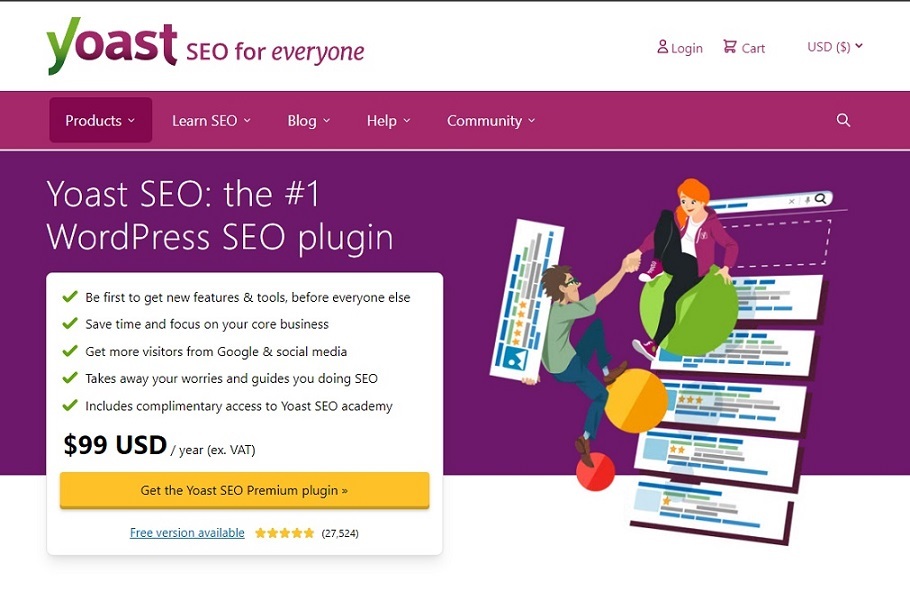
The best thing about Yoast SEO is that it’s free. While there is a paid version available that includes several additional, useful features, the free version is perfect if you want to:
- Optimize content for search engines from within the WordPress dashboard.
- Review the density and distribution of a single keyword or phrase.
- Get critical SEO recommendations regarding readability, text length, headings, meta titles and descriptions, and more.
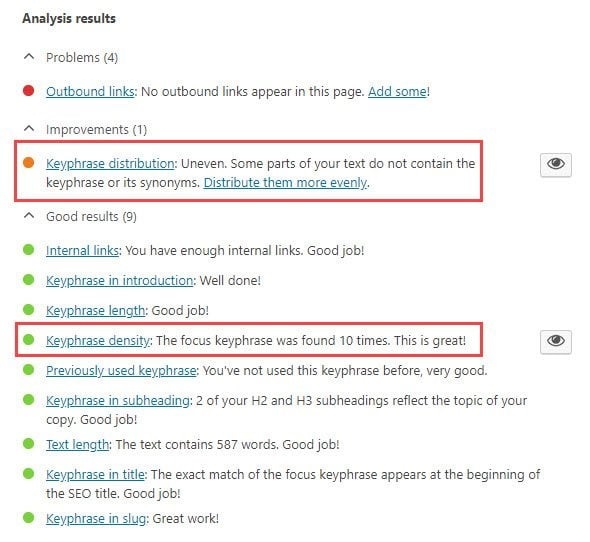
For a free plugin, Yoast is robust and thorough while still being easy to use. However, if you’re willing to put aside a very reasonable $99 a year, you can access the entire host of the plugin’s features, which includes:
- Checking multiple keywords and phrases.
- SEO training courses.
- Internal link analysis.
- 24/7 support.
SEOBook Keyword Density Analyzer
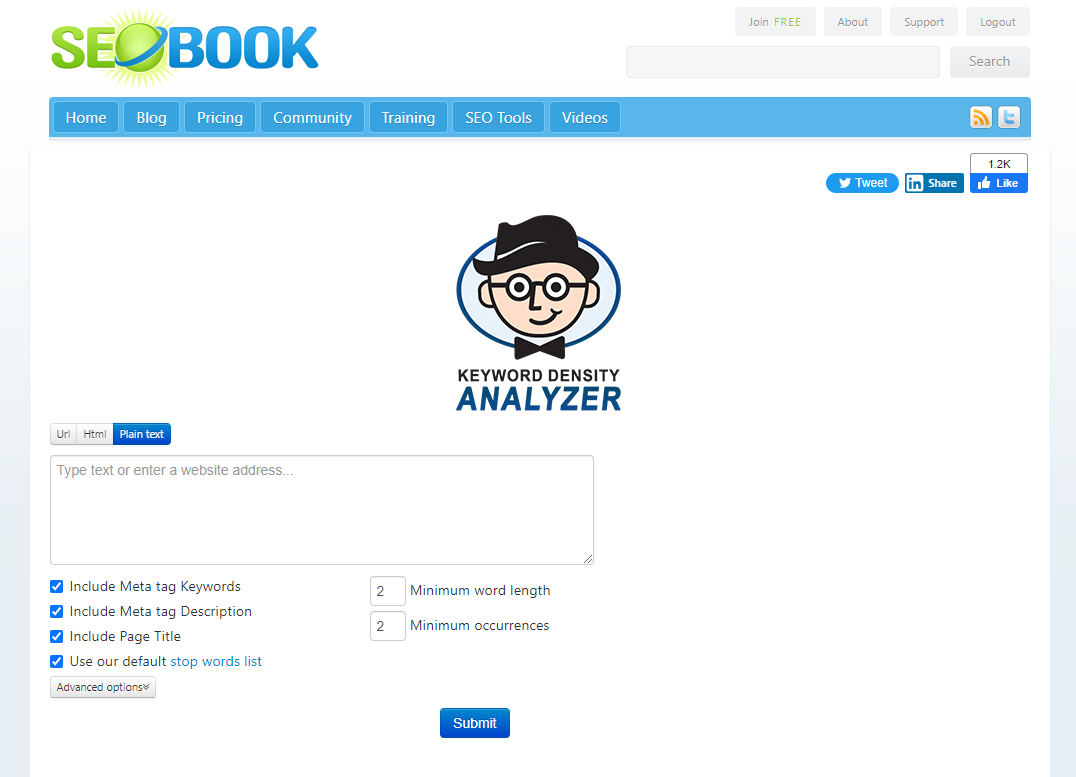
- A list of keywords related to yours.
- The search frequency of those words.
- The number of average impressions and clicks.
- The value of the related traffic.
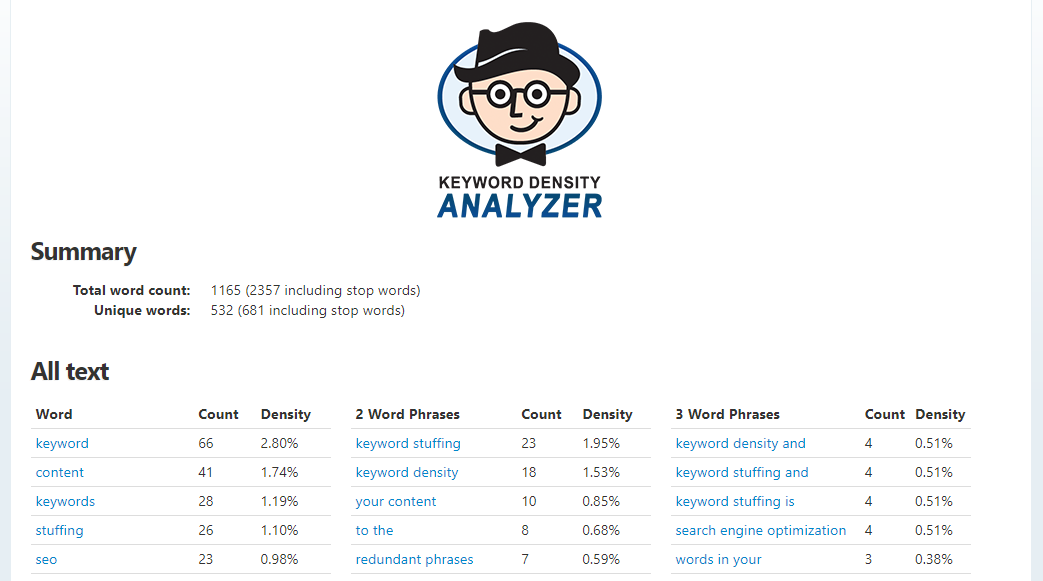
First, the SEOBook Keyword Density Analyzer is extremely simple to use and quickly breaks down density into three columns:
- Single keywords.
- 2-word phrases.
- 3-word phrases.
SEO Review Tools Keyword Density Checker
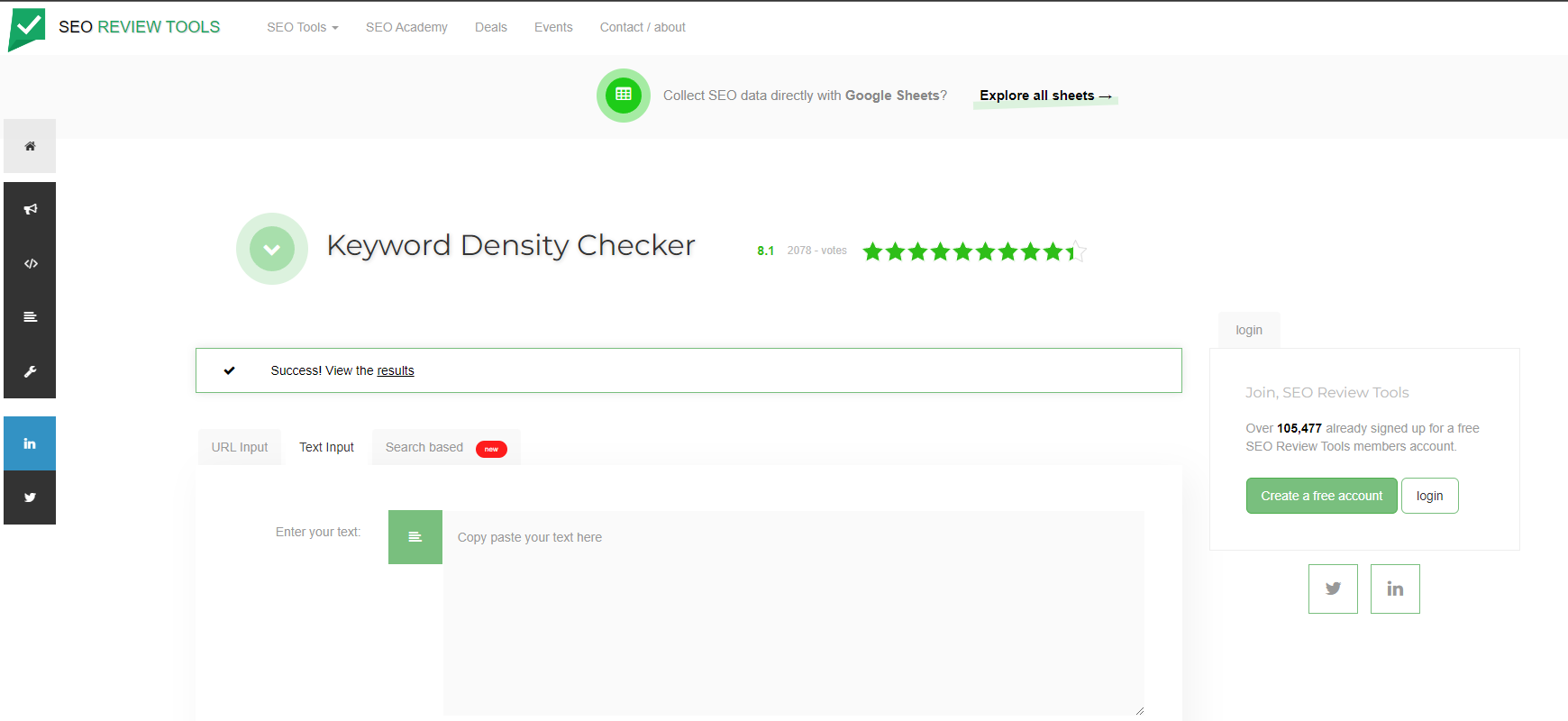
- One-word phrases.
- Two-word phrases.
- Three-word phrases.
The best part of this checker is the additional features you can select from the “Keyword options” dropdown menu. These features include:
- Keyword research tools.
- A featured snippet suggestion tool.
- A free Google keyword rank checker.
- Link-building research tools.
- An article optimization tool that will score your content out of 100 and give improvement recommendations.
How To Fix Or Avoid Keyword Stuffing
Using A Variety Of Optimization Tools
- Alternative and semantically related keywords.
- H1 and H2 headings.
- How many images to use.
- An ideal word count for your topic.
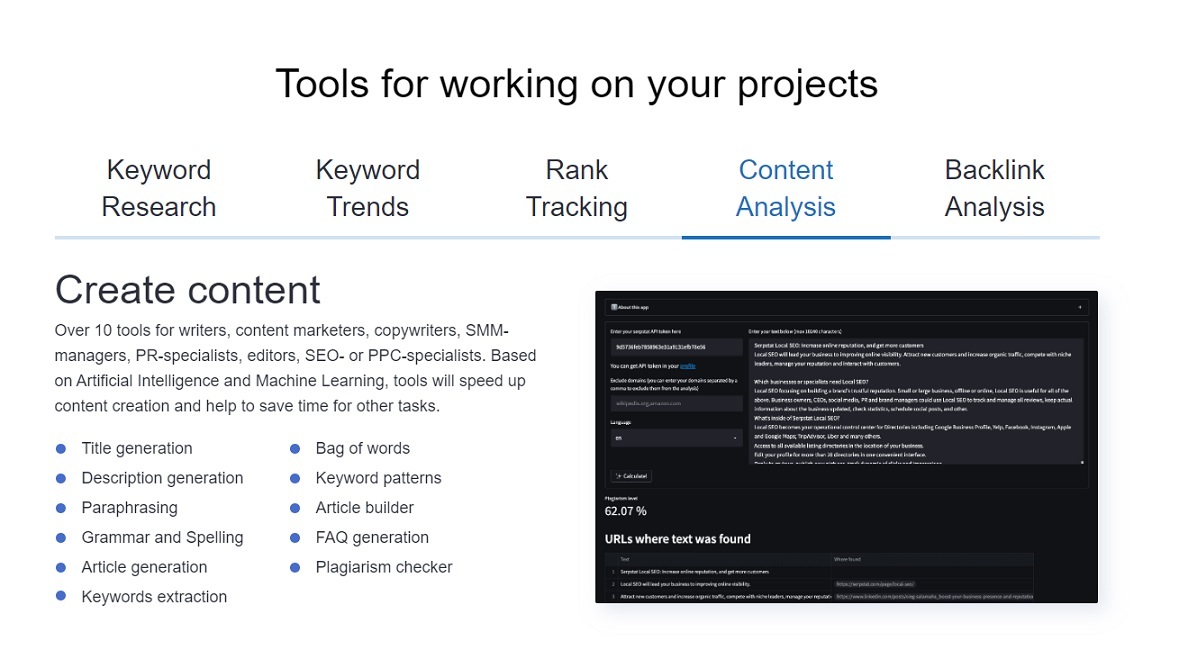
Use Keywords In The Right Places - If It Makes Sense
- Meta title / title tag.
- Meta description.
- URL.
- H1.
- The first paragraph of your page content.
While it’s relatively easy to use in those key spots we mentioned above, we instead decided to collect a list of resources that would benefit beginners. That’s why we went with “Where a Beginner Can Learn SEO In 2023: Ultimate Guide” instead - after all, we’re not teaching beginners SEO but sharing a list of valuable sources that could help them on their learning journey.
Use Alternative And Related Keywords
Google’s algorithm can analyze and understand your content’s meaning based on “related keywords.”
For example, let’s say your primary keyword is “keyword research.” Related keywords could include “keyword search,” “keyword planning,” keyword tools,” “SEO keyword research,” and more.

- WordStream Free Keyword Research Tool.
- Moz Keyword Explorer.
- Ahrefs Free Keyword Generator.
- Serpstat Keyword Research Tool.
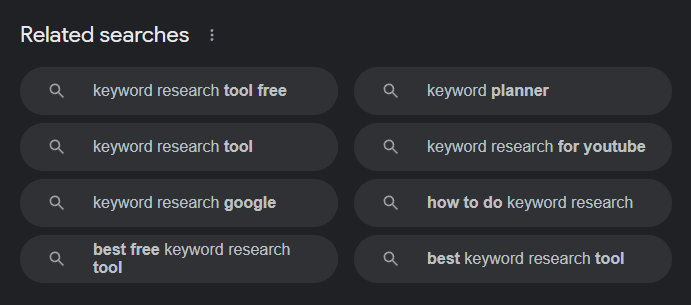
Don’t Aim For A Specific Keyword Density
Instead of using your keyword a specific number of times, aim to use it - and any other related keywords - as naturally as possible within your page’s text. Try not to keep track of the number at all; instead, write your content to read as naturally as possible while still being complete and informative.
Once done, you can evaluate your text using one of the free tools we mentioned to see if your density may be too high. The odds are that you’ll have just the right keyword density without trying to force the words into your content.
Write Quality Content That Covers A Topic Thoroughly
The answer is simple: detailed, informative, and helpful topic coverage.
In other words, instead of focusing on using a keyword as many times as possible, or using a broad selection of keywords, focus on covering a topic in detail:
- Include subtopics that might appeal to a user.
- Try to answer any questions that a searcher might have about the topic.
- Touch on related topics and, if need be, explain them in more detail - or link to relevant pages that do so.
- Include links to valuable sources of related information.
The first way is to use Google Search. Use your primary keyword as your search query and look at the section “People Also Ask.”
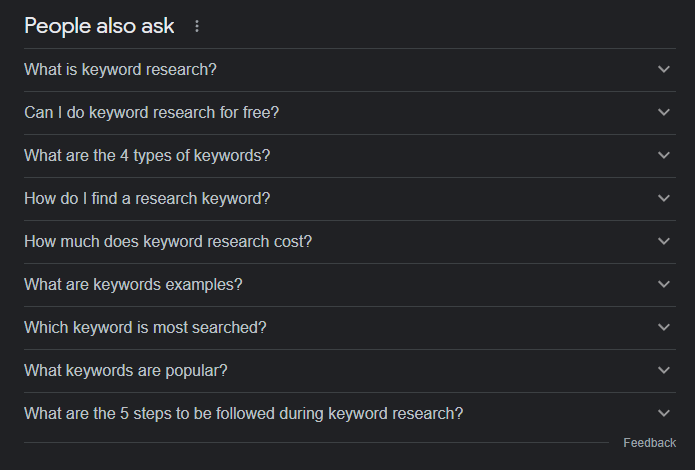
The second method takes a little more time. Again, use Google Search to find articles related to the topic you want to cover. Open the top ten results and look at the headings they use within their pages. Since these pages are already ranking for the search query or keyword you’re targeting, it’ll give you the best idea of what to include in your content.
In short, your goal should always be to answer a searcher’s question regarding a particular topic as thoroughly as possible. Do that, and you’ll soon find that trying to keep track of keywords (density or stuffing) is no longer necessary.
What Are Redundant Phrases?
For example, let’s say that you have a website that gives advice on cryptocurrency and related blockchain investments. You decide to do an article on NFT investment, and as you do keyword research, you discover that the term “invest NFT” has a good search volume and medium competition.

“If you are considering invest NFT today, you will need to do your research.”
As you can see from the example above, the use of the keyword verbatim makes the sentence appear nonsensical and reads poorly. Clearly, the better way to use the keywords would be to say:
“If you are considering investing in NFTs today, you will need to do your research.”
This begs the question, how do you target keywords when you can’t use them exactly as-is?
Using LSI Keywords
However, Latent Semantic Indexing (LSI), also known as Latent Semantic Analysis (LSA), is very real. This natural-language programming technique was developed in the 1980s and is a patented technology. However, Google uses the same principles to learn how natural language works, determining which words and phrases are effectively related. You’ll often see examples of this at the bottom of Google’s search result pages.
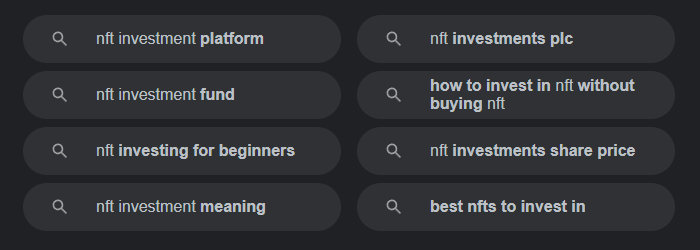
Other Forms Of Redundancy That Affect Your SEO
- Redundant content.
- Redundant synonym-based statements (ex. Added bonus, end result, 12 midnight, etc.)
Redundant Content
There are a lot of contradicting opinions on duplicate content and how it can affect your site or page rank in search engines. According to Search Engine Journal, you’ll never receive an actual, visible penalty in Google Search Console if you replicate articles or pages on your site. However, while that’s true, you may still find that these pages perform poorly in search results. That’s because of how Google handles duplicated pages and canonical URLs.
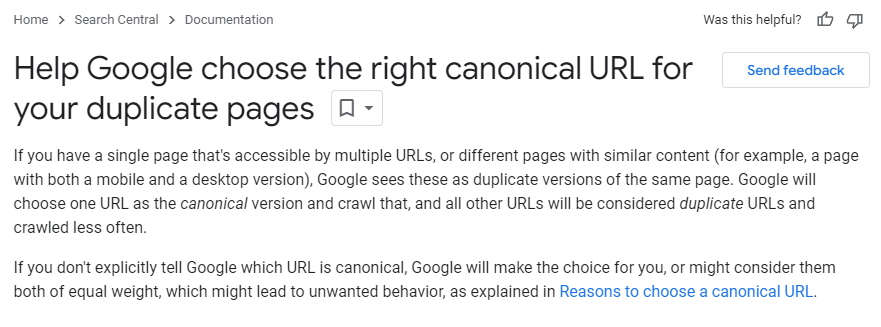
- Use tools to find the pages and replace them with unique content.
- Alter the content to target different, semantically-related keywords (LSI Keywords).
- Use canonical URLs as per Google’s instructions.
Conclusion
If your goal is to rise to Google’s first page of search results, keyword stuffing and redundant phrases should be avoided. With the tips and tools we’ve shared, you should be well on your way to improving your content and your SEO score
Speed up your search marketing growth with Serpstat!
Keyword and backlink opportunities, competitors' online strategy, daily rankings and SEO-related issues.
A pack of tools for reducing your time on SEO tasks.
Discover More SEO Tools
Tools for Keywords
Keywords Research Tools – uncover untapped potential in your niche
Serpstat Features
SERP SEO Tool – the ultimate solution for website optimization
Keyword Difficulty Tool
Stay ahead of the competition and dominate your niche with our keywords difficulty tool
Check Page for SEO
On-page SEO checker – identify technical issues, optimize and drive more traffic to your website
Recommended posts
Cases, life hacks, researches, and useful articles
Don’t you have time to follow the news? No worries! Our editor will choose articles that will definitely help you with your work. Join our cozy community :)
By clicking the button, you agree to our privacy policy.

